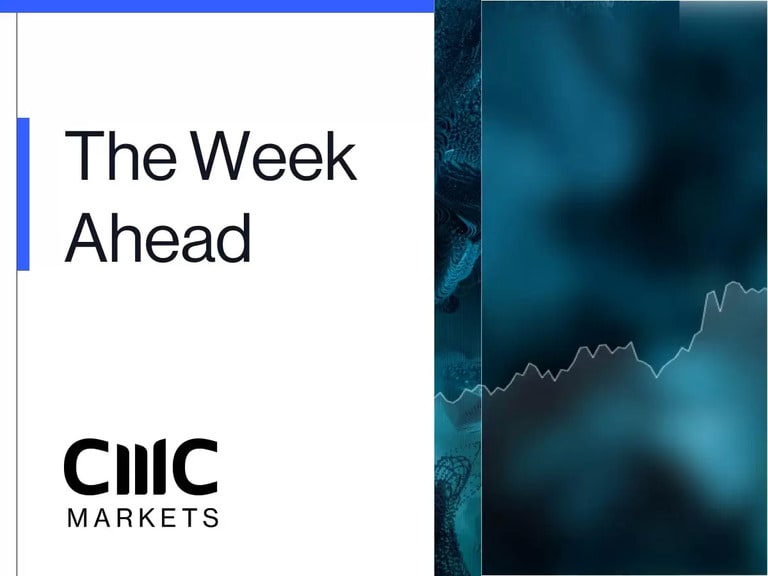After 6 days of declines, European markets managed to break their recent losing streak yesterday, closing marginally higher after a day when the direction could have gone either way.
The catalyst for the recovery off the day's lows was a strong US session which was driven by two sets of strong US economic numbers. US consumer confidence for June hit its highest levels in 17 months, while new home sales jumped by 12.2%, the highest number in over a year.
If the US economy is starting to struggle then there is little evidence of that in yesterday’s numbers, which in turn helped drive a strong finish for US markets, led by the Nasdaq 100.
Yesterday’s resilience came in spite of another slide in crude oil prices, which have continued to suffer under the weight of concerns about a slowing global economy and a drop in demand over the second half of the year.
The increased stridency of hawkish central bank rhetoric coming out of Sintra in Portugal at the ECB central bank conference, when it comes to future rate hikes is helping to drive yields higher, yet stock markets appear unfazed.
Yesterday we heard from several ECB governing council members, including President Christine Lagarde pushing back against the idea of rate cuts in 2024, as well as signalling a commitment to another rate hike at the July meeting.
This seems set in stone now, although this week’s June flash CPI number might cast some doubts as to whether the rate hikes might continue beyond July.
Today’s speaker slate at Sintra could well create more headlines with the likes of Bank of England Governor Andrew Bailey, Bank of Japan governor Kazuo Ueda, Fed chair Jay Powell and Christine Lagarde speaking on a panel discussing monetary policy.
Of particular interest will be any comments from Governor Ueda given the declines seen in the Japanese yen over the past few days, seeing it sink to 15-year lows against the euro, as well as 8-year lows against the pound, and record lows against the Swiss franc in the last 24 hours. We’ve already heard from Japanese Finance Minister Suzuki in the last couple of days warning that excessive movements in the yen might prompt an appropriate response.
While yen traders are focussing on the 145.00 area against the US dollar it can’t have escaped their attention that their currency is getting hit even harder away from the spotlight of the greenback. If a response is coming it could well come soon.
Staying with currencies the Australian dollar plunged overnight after headline CPI slowed sharply on May from 6.8% to 5.6%, well below forecasts of 6.1%, and with the RBA meeting next week this slowdown could prompt the central bank to re-pause the pace of the current rate hiking cycle.
After the European close we also get the latest results from the US bank stress tests, which couldn’t be more timely given recent events in March, however they aren’t likely to offer much insight into what took place, as the US regional banks were not covered under the various scenarios, as they were considered too small and not systemically important enough.
This was a major oversight, as recent experience in Europe has taught us, and particularly in Spain over 10 years ago, where a large cohort of Spanish Cajas nearly brought the economy to its knees and resulted in a banking bailout. Just because a bank is small doesn’t mean it won’t cause a financial meltdown if its troubles spread. The tests also had a rather big flaw in them in that they didn’t factor a sharp rise in interest rates into any of the scenarios, the very scenario that started the dominos tumbling with the collapse of SVB.
EUR/USD – holding above the 50-day SMA and support at the 1.0870/80 area. We have resistance back at last week’s high just above the 1.1000 level, with the main resistance at the April highs at 1.1095. Below 1.0850 signals a move towards 1.0780.
GBP/USD – a positive session yesterday holding above the lows of last week, and support at the 1.2680/90 area. Below 1.2670 could see a move towards the 50-day SMA. Still on course for a move towards the 1.3000 area but needs to clear 1.2850.
EUR/GBP – appears to be building up to move higher but needs to move through the 0.8630/40 area. The main support is at last week’s low at the 0.8515/20 area. A move through 0.8640 could see a move towards 0.8680. While below the 0.8630 area the bias remains for a return to the recent lows.
USD/JPY – continues to edge higher towards the 145.00 area. We have support at the 142.50 area, which was the 61.8% retracement of the 151.95/127.20 down move. A fall below this support area could see a deeper fall towards 140.20/30.
Disclaimer: CMC Markets is an execution-only service provider. The material (whether or not it states any opinions) is for general information purposes only, and does not take into account your personal circumstances or objectives. Nothing in this material is (or should be considered to be) financial, investment or other advice on which reliance should be placed. No opinion given in the material constitutes a recommendation by CMC Markets or the author that any particular investment, security, transaction or investment strategy is suitable for any specific person. The material has not been prepared in accordance with legal requirements designed to promote the independence of investment research. Although we are not specifically prevented from dealing before providing this material, we do not seek to take advantage of the material prior to its dissemination.






